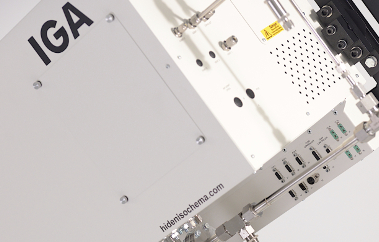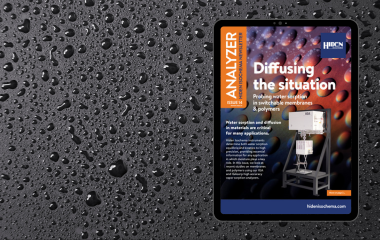In the Journal of the American Chemical Society, Stylianou et al have reported on the investigation of the structural transformation of a Zn-based flexible
New XEMIS Publications
New Studies Published Featuring Xemis Sorption Analyzers
Earlier this year, we reported on two publications from customers using XEMIS gravimetric sorption analyzers to characterize the gas sorption properties of novel metal-organic frameworks (Unique features of XEMIS demonstrated by latest MOF research and New JACS article published featuring XEMIS data) [1,2].
Following hot on the heels of these publications, two other Hiden Isochema customers have also published results of studies which include measurements performed on their XEMIS sorption analyzers in different, but related application areas.
Energy gas storage by sustainable carbons
A study in ACS Sustainable Chemistry & Engineering [3] co-authored by scientists at the Spanish National Institute of Carbon (INCAR-CSIC, Oviedo) and the University of Nottingham, UK, reports the synthesis of high surface area carbons derived from biomass. Significantly, the sustainably synthesized carbons exhibit tailored porosity, which results in high, controllable gas storage capacities. Hiden Isochema IGA and XEMIS gas sorption analyzers were used for high-pressure hydrogen and carbon dioxide gas sorption measurements on the 5 different carbon samples. The XEMIS adsorption data was used to illustrate the different pressure-dependent CO2 uptake (storage) trends for the microporous and micromesoporous carbons studied.
Gas separation by novel polymers of intrinsic microporosity
Scientists at the National University of Singapore and their collaborators report the synthesis, processing, and characterization of polymers of intrinsic microporosity (PIMs) in a recent Journal of Membrane Science paper [4]. The polymers incorporated Tröger’s base functional group to tailor their structure and were cast into films. An XEMIS sorption analyzer was used to measure the gas concentration and hence solubility of gases including H2, N2, CO2 and CH4 in the PIMs under defined pressure and temperature conditions. Together with gas permeability data from other measurements, the XEMIS data was used to evaluate the gas separation properties of the polymers. The best performing polymer exceeds the 2008 upper bound of the Robeson plot for H2/CH4 separation.
For further details on the capabilities of Hiden Isochema XEMIS sorption analyzers, or indeed any of our product range, please contact us.
References
[1] M. Savage, I. da Silva, M. Johnson, J. H. Carter, R. Newby, M. Suyetin, E. Besley, P. Manuel, S. Rudic, A. N. Fitch, C. Murray, W. I. F. David, S. Yang and M. Schröder (2016) Observation of Binding and Rotation of Methane and Hydrogen within a Functional Metal-Organic Framework, Journal of the American Chemical Society 138(29), 9119-9127
[2] M. Savage, Y. Cheng, T. L. Easun, J. E. Eyley, S. P. Argent, M. R. Warren, W. Lewis, C. Murray, C. C. Tang, M. D. Frogley, G. Cinque, J. Sun, S. Rudic, R. T. Murden, M. J. Benham, A. N. Fitch, A. J. Blake, A. J. Ramirez-Cuesta, S. Yang and M. Schröder (2016) Selective Adsorption of Sulfur Dioxide in a Robust Metal-Organic Framework Material, Advanced Materials 28(39), 8705-8711
[3] M. Sevilla, W. Sangchoom, N. Balahmar, A. B. Fuertes and R. Mokaya (2016) Highly Porous Renewable Carbons for Advanced Storage of Energy-Related Gases (H2 and CO2) at High Pressures, ACS Sustainable Chemistry & Engineering 4(9), 4710–4716
[4] Y. Xiao, L. Zhang, L. Xu and T.-S. Chung (2017) Molecular Design of Tröger’s Base-based Polymers with Intrinsic Microporosity for Gas Separation, Journal of Membrane Science 521, 65–72


